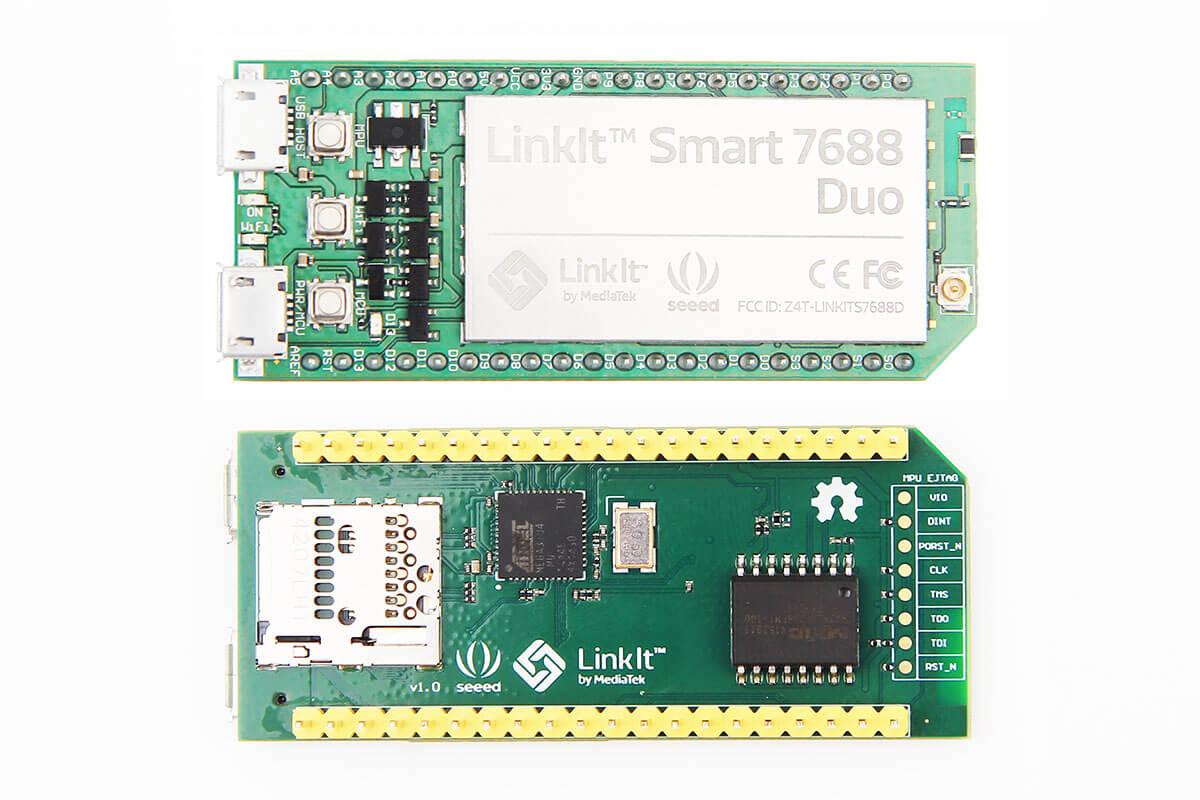Hello Folks,
First of all Wishing you Merry Christmas and a Happy New Year. I am finally Restarting the blog I started few years ago, and what's more fun than getting rid of storage devices occupying my damn USB ports ( @all MAC users You know What I mean ;-) )!!
So, Lets get started.
Now there are many wireless storage devices like these that costed me about 3K INR !! hey but where is the fun of learning there ?
So, I went with buying a Linkit Smart 7688 Duo Board that costed me about 1.6K INR and as I already had a 64 GB Memory card laying around; Why not build something like this using
Linkit Smart?
1. Introduction
Linkit Smart 788 Duo is a Small development platform based on OpenWRT, i.e. the same tiny footprint linux based OS running on your routers, Arduino Yun (now changed to Linino OS), and many other development platform. Below listed is some technical data for NErDS!!
So, basically this board is a tiny computer running tiny version of Linux which comes in a tiny box :).
2. BASIC CONFIGURATION
Well next I wanted to get an SD card and mount it on the device; Obviously a 32 MB flash wont even hold anything :( . So we get our mighty 64 GB Memory card laying around and insert it. :D That was easy :)Ohh boy,; But how to access the card or the device ?
For now just follow the steps, we will cover the later in detail :)
Step1 : Connect Linkit Smart (Left most usb with pwr/mcu label) to power adapter (5v at least 500mA). Ensure green light turning on. The orange light will glow once and then will glow again for about 10 sec before blinking.
Step2 : Connect to the Wirless network created by linkit one something like this LinkIt_Smart_7688_XXXX.
Step3 : Open a web browser and type http://mylinkit.local/
Step4 : The web page will ask you to setup a new password for root. Do that and login on to the page.
Step5 : Find "Current IP Address" tab and note down your IP address.
Step6 : Open your terminal and type
ssh root@<IP_ADDR> (Replace <IP_ADDR> with IP address )
t will ask you to enter your password. Enter that and you are in :)
Now that the card is in , We need to mount the card; well before that I thought, why cant we boot the entire system from the memory card itself ?? Why to boot from 32 MB raw flash that seems to have a limited write cycles ? So a little googling fetched me this
This is an essential step as you are now booting the device from the SD card. Don't worry if you are not able to understand this just copy paste the commands given in the above link and you are good to go
3. CREATING NETWORK SHARES
Well now that we have our base ready, all we have to do is sharing a folder that we can access from anywhere. We will do this using openWRT console.
STEP 1 : Create a folder to share. Type the following on your terminal
cd /root
mkdir AirDrive
chmod o+rwx /root/AirDrive
chown nobody /root/AirDrive/
STEP 2 : Open a web browser and type http://mylinkit.local/ ;Clicko Go to OpenWrt
STEP 3 : Login using username root and your password.
STEP 4 : Click on the Services tab.
STEP 5 : Click Network Shares tab. and replicate the contents as given in the image.
STEP 6 : Now Open File Explorer/ Finder browse to network and you will be able to see "AirDrive". on opening use Guest login and enjoy your own Wireless Pendrive.
Hope you liked the project :)
PS : Just for fun I am using the Cute tiny box it came in as its cover :)

REFERRENCES
1. Seeed Studio Product Page2. Seeed Studio Wiki Page
3. Fab.to.Lab Product Page (To buy in INDIA)
4. H/W Schematic Files
5. Mediatek Labs Page
6. Mediatek Getting Started Guide










